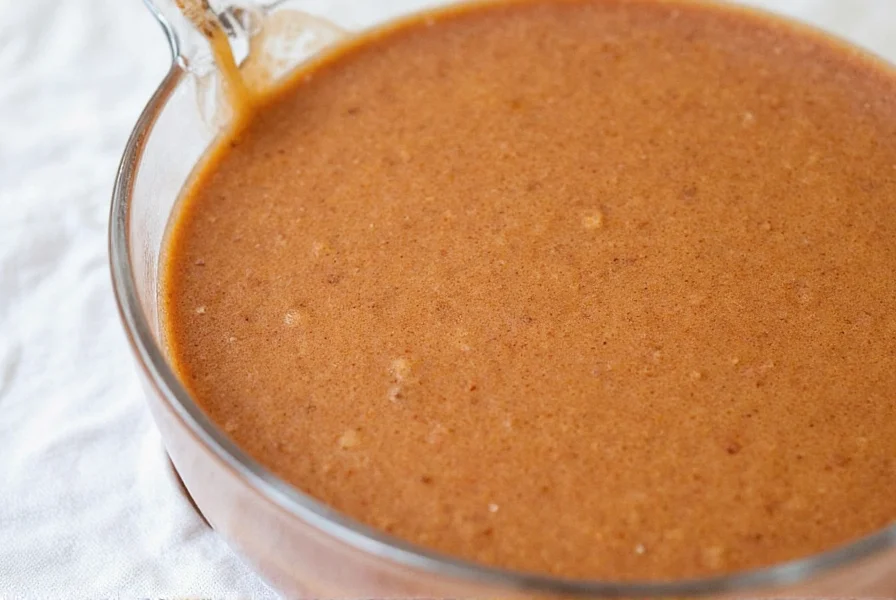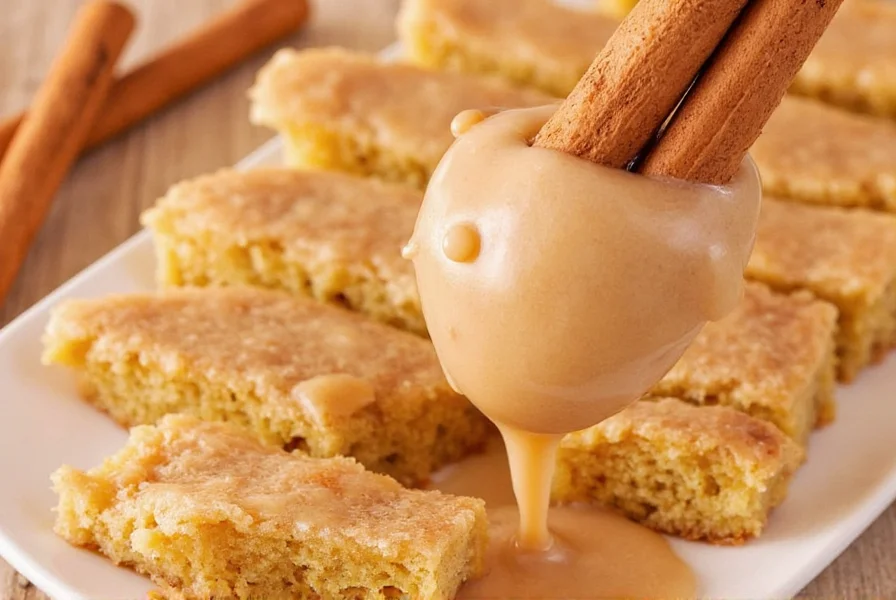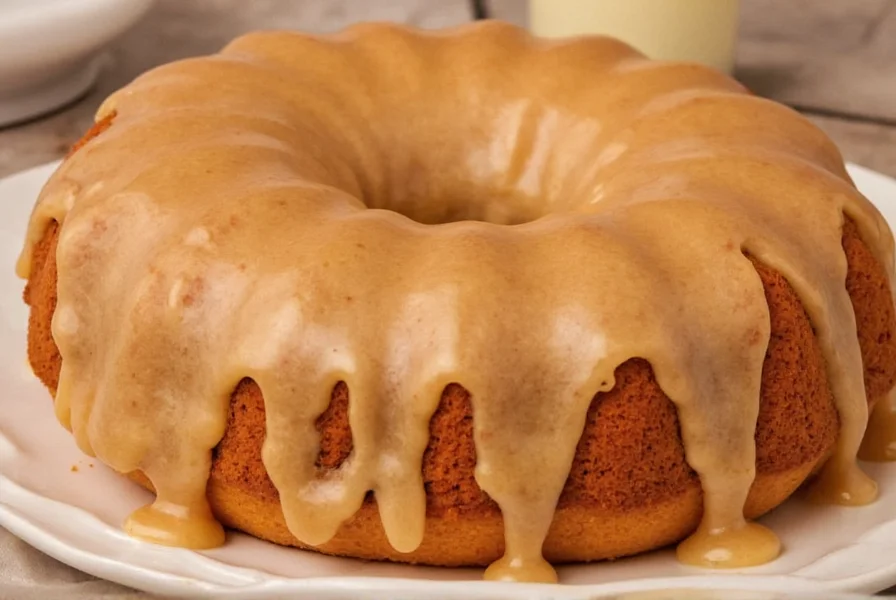Creating the perfect cinnamon glaze requires understanding both the science behind its texture and the art of balancing flavors. This essential baking component transforms ordinary pastries into extraordinary treats with its warm spice notes and glossy finish. Whether you're a home baker or professional chef, mastering cinnamon glaze opens doors to countless dessert possibilities.
The Essential Components of Cinnamon Glaze
Every exceptional cinnamon glaze recipe relies on four fundamental elements working in harmony. Powdered sugar (also called confectioners' sugar) forms the base, providing sweetness and structure. Its fine texture dissolves easily, creating that signature smooth consistency without graininess. The 10X designation indicates the level of fineness, with higher numbers meaning more cornstarch added to prevent caking.
Cinnamon quality dramatically impacts your final product. Ceylon cinnamon offers a delicate, complex flavor profile with subtle citrus notes, while Cassia cinnamon delivers a more robust, traditional spicy warmth. For most baking applications, Cassia works best due to its stronger presence that doesn't get lost in the sweetness. Always use freshly ground cinnamon when possible for maximum flavor impact.
The liquid component—typically milk, cream, or half-and-half—controls consistency. Whole dairy products provide richness that complements the cinnamon's warmth. For dairy-free options, almond milk or coconut cream work surprisingly well, though they may require slight recipe adjustments. The acid in buttermilk can also enhance flavor complexity in certain applications.
Step-by-Step Preparation Guide
Follow this professional method for flawless cinnamon glaze every time. Begin by sifting 2 cups of powdered sugar into a medium bowl to eliminate any lumps that could compromise smoothness. Add 1½ teaspoons of ground cinnamon and whisk thoroughly to distribute the spice evenly through the sugar.
Create a well in the center and gradually incorporate 2½ tablespoons of heavy cream while whisking constantly. The key to perfect texture is gradual liquid addition—too much too quickly creates a runny glaze that won't set properly. After initial incorporation, add 1½ teaspoons of pure vanilla extract and a pinch of salt to enhance flavor complexity.
| Consistency Issue | Solution | Timeframe |
|---|---|---|
| Too thick | Add liquid ½ tsp at a time | Immediate |
| Too thin | Add powdered sugar 1 tbsp at a time | 5-10 minutes |
| Grainy texture | Sift again; ensure sugar is fresh | Immediate |
| Dull appearance | Add small amount of corn syrup | While mixing |
For optimal results, let the glaze rest for 5-7 minutes after mixing. This allows the sugar to fully hydrate, resulting in a smoother application. The ideal working temperature is between 70-75°F (21-24°C)—warmer than room temperature causes premature setting, while cooler temperatures create drag lines during application.
Advanced Techniques for Professional Results
Master bakers employ several techniques to elevate their cinnamon glaze beyond basic recipes. One professional secret involves blooming the cinnamon in warm cream before adding sugar. Heat 2 tablespoons of cream to 110°F (43°C), whisk in 1½ teaspoons cinnamon, and let steep for 5 minutes. This extracts maximum flavor compounds from the spice, creating a more nuanced glaze.
For bakery-quality shine, substitute 10% of the liquid with light corn syrup. This prevents crystallization and creates that professional glossy finish you see in pastry shop windows. Alternatively, a small amount of clear honey (¼ teaspoon per cup of sugar) adds subtle floral notes that complement the cinnamon beautifully.
Temperature control proves crucial when applying glaze to baked goods. Items should be cooled to 90-95°F (32-35°C)—warm enough for the glaze to flow smoothly but cool enough to prevent melting into the pastry. For cinnamon rolls specifically, apply glaze when they've cooled for exactly 15 minutes after baking for optimal absorption without sogginess.
Variations for Different Applications
Different baked goods require tailored cinnamon glaze formulations. For donuts, increase the liquid component by 25% to create a thinner consistency that clings to the curved surface without pooling. Add ¼ teaspoon of nutmeg to complement the yeast flavor in donut glazes.
Coffee cake benefits from a thicker glaze that maintains definition on the crumb topping. Reduce liquid by 20% and add 1 tablespoon of melted butter for richness. This variation creates beautiful drizzle patterns that hold their shape rather than soaking in completely.
For vegan cinnamon glaze, combine full-fat coconut milk (chilled overnight) with powdered sugar. The coconut cream that separates provides the perfect fat content to mimic dairy. Add 1 teaspoon of apple cider vinegar to balance the sweetness with subtle acidity, creating a more complex flavor profile that mimics traditional glaze.
Perfect Pairings and Creative Applications
While cinnamon rolls represent the classic application, innovative bakers use cinnamon glaze in unexpected ways. Drizzle it over apple fritters for a flavor synergy that enhances both components. The glaze's sweetness balances the tartness of the apples while the cinnamon complements their natural flavor.

For breakfast applications, spread a thin layer of cinnamon glaze on waffles before serving. The heat from the waffle creates a delightful textural contrast—crisp exterior with a slightly softened, flavorful top layer. Add chopped toasted pecans immediately after glazing for complementary crunch.
Dessert professionals often use cinnamon glaze as a component in layered treats. Try sandwiching two sugar cookies with a thin layer of cinnamon glaze, then rolling the edges in crushed cinnamon sugar. The glaze acts as both adhesive and flavor enhancer, creating a sophisticated version of the classic sandwich cookie.
Storage and Shelf Life Considerations
Properly stored cinnamon glaze maintains quality for different durations depending on ingredients. Dairy-based glazes last 3-4 days in an airtight container in the refrigerator. Before reuse, bring to room temperature and whisk vigorously—sometimes a few drops of fresh cream are needed to restore perfect consistency.
For extended storage, freeze glaze in ice cube trays, then transfer the frozen portions to freezer bags. Properly frozen cinnamon glaze maintains quality for up to 3 months. Thaw overnight in the refrigerator, then bring to working temperature before use. Avoid repeated freezing and thawing cycles, which compromise texture.

Commercial operations often prepare cinnamon glaze bases without liquid, then add the liquid component just before use. This dry mix method extends shelf life to 6 months when stored in a cool, dark place. Simply combine 2 cups powdered sugar and 1½ teaspoons cinnamon, then add liquid as needed when preparing for service.
Troubleshooting Common Cinnamon Glaze Problems
Even experienced bakers encounter issues with cinnamon glaze. If your glaze develops a skin during application, cover the surface directly with plastic wrap—this prevents air exposure that causes premature setting. For immediate use, gently rewhisk the affected portion with a few drops of cream.
When glaze separates after application, this typically indicates temperature mismatch between glaze and product. Ensure both are within 10°F (6°C) of each other. If separation occurs, gently warm the item to remelt the glaze, then reapply a thin layer for proper adhesion.
Bubble formation in finished glaze usually results from vigorous whisking that incorporates too much air. Next time, use a gentle folding motion rather than vigorous whisking. For immediate correction, pass the glaze through a fine-mesh sieve to remove air bubbles before application.
Frequently Asked Questions
How do I prevent my cinnamon glaze from becoming too runny?
To prevent runny cinnamon glaze, measure liquids carefully using proper measuring spoons. Add liquid gradually—start with 2 tablespoons instead of the full amount, then add more only if needed. If your glaze becomes too thin, add additional powdered sugar one tablespoon at a time until desired consistency is reached. Remember that glaze thickens slightly as it sits, so wait 5 minutes before making final adjustments.
Can I make cinnamon glaze without powdered sugar?
Traditional cinnamon glaze requires powdered sugar for its proper texture and quick dissolution. Granulated sugar won't dissolve properly and will create a gritty texture. However, you can make a substitute by processing granulated sugar in a food processor with 1 tablespoon cornstarch per cup of sugar until finely ground. This homemade powdered sugar works in a pinch but may not produce quite the same smoothness as commercial powdered sugar.
Why does my cinnamon glaze harden too quickly?
Cinnamon glaze hardens quickly when exposed to air or applied to cool surfaces. To prevent premature hardening, keep unused portions covered with plastic wrap directly on the surface. Work with smaller batches that you can use within 10-15 minutes. If your kitchen is particularly cool, maintain the glaze at 75-80°F (24-27°C) by placing the bowl over warm (not hot) water. Adding ½ teaspoon light corn syrup per cup of powdered sugar also slows the setting process.
What's the best cinnamon to use for cinnamon glaze?
Cassia cinnamon provides the strongest, most traditional cinnamon flavor that holds up well in glazes. Its robust profile doesn't get lost in the sweetness. For more complex flavor, try a blend of 75% Cassia and 25% Ceylon cinnamon. Always use freshly ground cinnamon from whole sticks when possible, as pre-ground cinnamon loses potency over time. Avoid cinnamon extracts as they can create an artificial flavor profile in glazes.











 浙公网安备
33010002000092号
浙公网安备
33010002000092号 浙B2-20120091-4
浙B2-20120091-4